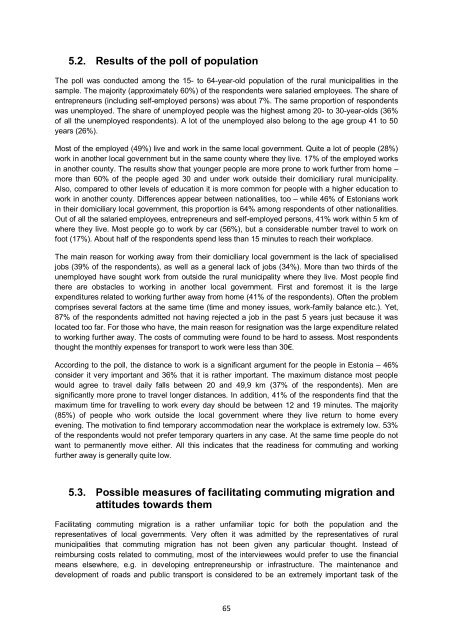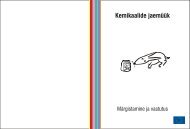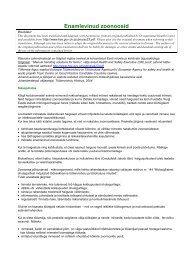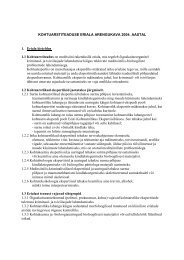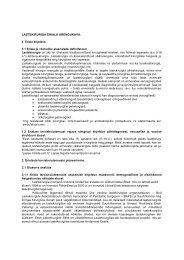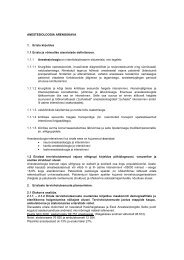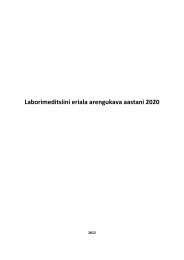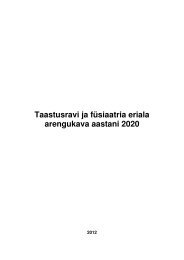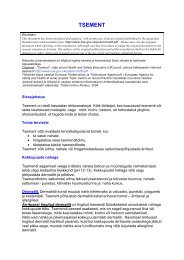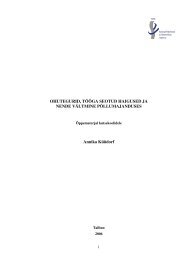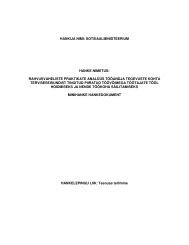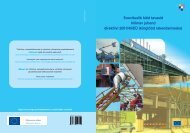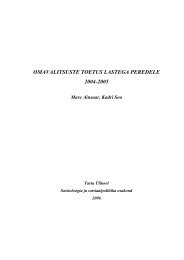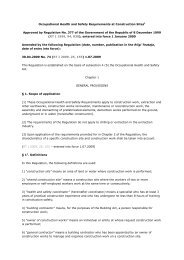You also want an ePaper? Increase the reach of your titles
YUMPU automatically turns print PDFs into web optimized ePapers that Google loves.
5.2. Results of the poll of population<br />
The poll was conducted among the 15- to 64-year-old population of the rural municipalities in the<br />
sample. The majority (approximately 60%) of the respondents were salaried employees. The share of<br />
entrepreneurs (including self-employed persons) was about 7%. The same proportion of respondents<br />
was unemployed. The share of unemployed people was the highest among 20- to 30-year-olds (36%<br />
of all the unemployed respondents). A lot of the unemployed also belong to the age group 41 to 50<br />
years (26%).<br />
Most of the employed (49%) live and work in the same local government. Quite a lot of people (28%)<br />
work in another local government but in the same county where they live. 17% of the employed works<br />
in another county. The results show that younger people are more prone to work further from home –<br />
more than 60% of the people aged 30 and under work outside their domiciliary rural municipality.<br />
Also, compared to other levels of education it is more common for people with a higher education to<br />
work in another county. Differences appear between nationalities, too – while 46% of Estonians work<br />
in their domiciliary local government, this proportion is 64% among respondents of other nationalities.<br />
Out of all the salaried employees, entrepreneurs and self-employed persons, 41% work within 5 km of<br />
where they live. Most people go to work by car (56%), but a considerable number travel to work on<br />
foot (17%). About half of the respondents spend less than 15 minutes to reach their workplace.<br />
The main reason for working away from their domiciliary local government is the lack of specialised<br />
jobs (39% of the respondents), as well as a general lack of jobs (34%). More than two thirds of the<br />
unemployed have sought work from outside the rural municipality where they live. Most people find<br />
there are obstacles to working in another local government. First and foremost it is the large<br />
expenditures related to working further away from home (41% of the respondents). Often the problem<br />
comprises several factors at the same time (time and money issues, work-family balance etc.). Yet,<br />
87% of the respondents admitted not having rejected a job in the past 5 years just because it was<br />
located too far. For those who have, the main reason for resignation was the large expenditure related<br />
to working further away. The costs of commuting were found to be hard to assess. Most respondents<br />
thought the monthly expenses for transport to work were less than 30€.<br />
According to the poll, the distance to work is a significant argument for the people in Estonia – 46%<br />
consider it very important and 36% that it is rather important. The maximum distance most people<br />
would agree to travel daily falls between 20 and 49,9 km (37% of the respondents). Men are<br />
significantly more prone to travel longer distances. In addition, 41% of the respondents find that the<br />
maximum time for travelling to work every day should be between 12 and 19 minutes. The majority<br />
(85%) of people who work outside the local government where they live return to home every<br />
evening. The motivation to find temporary accommodation near the workplace is extremely low. 53%<br />
of the respondents would not prefer temporary quarters in any case. At the same time people do not<br />
want to permanently move either. All this indicates that the readiness for commuting and working<br />
further away is generally quite low.<br />
5.3. Possible measures of facilitating commuting migration and<br />
attitudes towards them<br />
Facilitating commuting migration is a rather unfamiliar topic for both the population and the<br />
representatives of local governments. Very often it was admitted by the representatives of rural<br />
municipalities that commuting migration has not been given any particular thought. Instead of<br />
reimbursing costs related to commuting, most of the interviewees would prefer to use the financial<br />
means elsewhere, e.g. in developing entrepreneurship or infrastructure. The maintenance and<br />
development of roads and public transport is considered to be an extremely important task of the<br />
65


